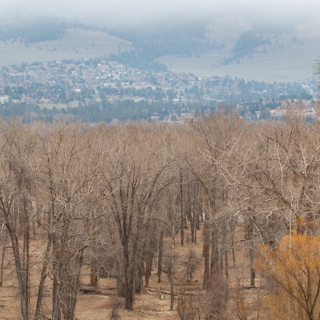What We Do
Detailed Environmental Mapping for Resource Management
The mission of the Spatial Analysis Lab is to bridge gaps between geospatial mapping technologies, applied research, and land management needs. We develop landscape-scale ecological information through partnerships with agency personnel, research groups, and conservation organizations to support effective resource planning and decision-making. We are committed to extending specialized training, career development, and work opportunities to students, recent graduates, and early career scientists.
Our research and projects involve scaling ground-based Earth observation data using remote sensing and modeling. A primary focus area is detailed vegetation and habitat mapping using imaging spectroscopy and airborne laser scanning. Applications include biodiversity conservation planning, plant trait and chemistry mapping, forest health monitoring, and invasive species detection.
We promote the use of geo-technologies in the state by delivering student internship and research opportunities, and partnering to develop workshops, training materials, and demonstration projects. Geospatial resources, training, and engagement opportunities and material are provided through this website.
The Spatial Analysis Lab is housed under the Broader Impacts Group at the University of Montana.
Latest News and Opportunities
- University of Wyoming's Geospatial Digital Informatics Lab is offering a funded graduate assistantship for Fall 2023 working with SAL collaborator Di Yang.
- The Beaverhead-Deerlodge National Forest is hiring for a permanent seasonal range technician in Wisdom or Wise River, Montana; 2 rangeland management specialists or a student trainee in Ennis, Montana; and a soil scientist in Philipsburg, Montana. Positions will be open for application in USAJOBS from February 15-27, 2023.
- New paper in Ecosphere: People, infrastructure, and data: a pathway to an inclusive and diverse ecological network of networks.
- Check out this interactive woody draw map highlighting our work to date.
- New report with recommendations resulting from last winter's workshop on broadening the use of NASA datasets by the species distribution modeling (SDM) community.
- New paper by Brecken Robb: benchtop spectroscopy helps rapidly identify variation within sagebrush shrubs - a tool for matching locally adapted plants to the right site.
- New paper in Ecology and Evolution: Developing a flexible learning activity on biodiversity and spatial scale concepts using open-access vegetation datasets from the National Ecological Observatory Network.
- Recent paper in Ecological Applications: Alpine treeline ecotones are potential refugia for a montane pine species threatened by bark beetle outbreaks.
- Can NASA get its satellite data into the real world?
See News and Opportunities for more.
